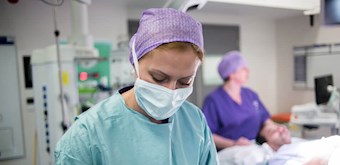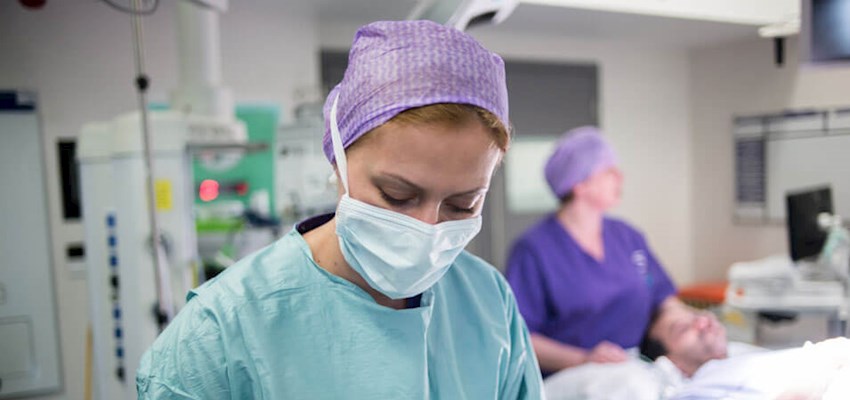Surgery for De Quervain's syndrome
Tendon release surgery
Treating De Quervain's syndrome, a painful condition that affects the tendons between the thumb and wrist
About surgery for De Quervain's syndrome
De Quervain's syndrome (also known as De Quervain's tenosynovitis) is a painful condition that affects the tendons between the thumb and wrist. It occurs as a result of overuse of the tendons or a simple strain. The tendons and the sheath that surrounds them (the synovium) becomes inflamed.
Its main symptoms are pain and swelling near the base of the thumb and pain when moving the thumb or wrist. If you have the condition, it will probably hurt when you turn your wrist, grasp anything or make a fist. It is most common in women after pregnancy.
Your GP or consultant will assess the extent of your condition and diagnose using a Finkelstein test, where thumb and wrist movements are performed to detect pain.
If your consultant recommends surgery, its aim is to widen the tunnel the tendons sit in, so that they have more room to move. This is known as surgical decompression of the tendon tunnel.
Its main symptoms are pain and swelling near the base of the thumb and pain when moving the thumb or wrist. If you have the condition, it will probably hurt when you turn your wrist, grasp anything or make a fist. It is most common in women after pregnancy.
Your GP or consultant will assess the extent of your condition and diagnose using a Finkelstein test, where thumb and wrist movements are performed to detect pain.
If your consultant recommends surgery, its aim is to widen the tunnel the tendons sit in, so that they have more room to move. This is known as surgical decompression of the tendon tunnel.
Need to know
-
What happens during surgery for De Quervain's? icon plus
Mild cases usually recover in a few weeks without treatment. If steroid injections and wearing a wrist/thumb splint do not help, minor surgery may be recommended.
During the procedure, the consultant will make a small cut in the skin and widen the tendon sheath (tunnel). The tunnel roof forms again as the split heals, but is wider, giving the tendons enough room to move without pain.
The anaesthetic may be local (injected under the skin at the site of operation), regional (injected in the armpit to numb the entire arm) or a general anaesthetic (where you'll be asleep during the procedure). -
How to prepare for surgery icon plus
Minor surgery for De Quervain's syndrome is generally a very safe procedure. However, as with any surgery, there are some risks and side effects involved.
Your consultant will explain these to you and answer any questions you might have. We will let you know in advance how long to avoid eating and drinking before your surgery. -
After surgery icon plus
After the procedure, you will be taken to the recovery unit where our dedicated team will look after you. You’ll be given pain relief medication if needed. Minor surgery for De Quervain's syndrome is performed as a day case.
You won’t need to stay in hospital long and should be able to go home after one day. Your consultant or specialist nurse will let you know when you can leave the hospital. They will also advise on how to manage your recovery and when you can get back to your usual daily routines.
You will normally have to wear a bulky bandage and keep your hand elevated for two to three days. You may need to stay off work for one week.
Our hand & wrist consultants
We're proud to work with leading orthopaedic experts across a range of medical fields, whose skills are matched by their integrity and compassion.




Our locations
From complex hand surgery to diagnostic tests and hand therapy, we provide exceptional care across our network of hospitals, outpatient centres and specialist clinics.
Request a hand and wrist appointment
We're happy to help you make an appointment with one of our experienced hand and wrist consultants. We can also make imaging and outpatient hand therapist appointments for you.
020 7079 4344
This content is intended for general information only and does not replace the need for personal advice from a qualified health professional.